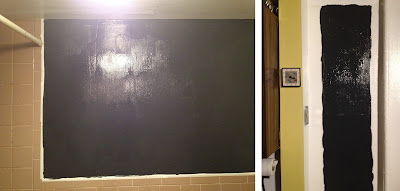One of my favorite projects that I tackled for our wedding was creating the necklace I wore on the big day. The end result looks like a million bucks, but the supplies were relatively inexpensive - it just took a bit of time and effort! I first blogged about starting this necklace a year ago in my post, All that Glitters.
I ended up deciding not to post the final walk through of the project until after the wedding so the big reveal of my necklace could be at our wedding. So here it is now - get ready for some major bling!
As I mentioned in my previous blog post on the necklace, the inspiration came from a gorgeous Jenny Packham necklace that I tried on at Mark Ingram Bridal Atelier when I was gown shopping. I fell in love with the necklace, but not the price tag! I decided I would attempt to make something similar on my own.
The first step in the process was to find the crystals to adorn the necklace. I picked out a variety of clear, smoke and amethyst colored crystals in marquee and round shapes. I selected 2 different sizes of marquee and 3 different sized round crystals - including tiny flat backs to fill in the spaces between the larger crystals. I think any shape and color of crystal could work - I took inspiration from the original Jenny Packham necklace style and details on my dress.
The second step is creating the necklace form. In Adobe Illustrator I used the pen tool to draw the shape I was envisioning based on my inspiration and printed out the results. You could also hand draw the necklace form on paper if that is easier for you. Then cut out the form from the paper and make sure the size is exactly right by trying on your paper necklace.
Once you have the paper form just right, its time to move to fabric. I decided to use black velvet as a backer for my necklace because I knew I needed a stiff fabric to hold up to the crystals and I wanted something soft against my skin. I adhered the paper to the non-fuzzy side of the fabric.
Starting at the edges of the necklace and working simultaneously on both the right and the left sides, I started to apply the crystals. I used the wonderful multi-purpose glue, E-6000 to adhere the crystals. I created a small pool of the glue, picked up a crystal with needle nose pliers, dipped it in the glue, and then set the crystal gently on the non-fuzzy side of the velvet backing. I followed the form of the backing, creating a leaf like pattern in placing the crystals and mirrored the design on the opposite side so it would be symmetrical. I continued this method, working across the necklace form. Once I had used all of the large crystals, I went back through and covered all remaining black backing with the small flat-backed crystals I had left.
 To finish the necklace, I attached a light grey velvet ribbon to the ends with the E-6000 and went through and cleaned up any excess glue bits using tweezers. So there you have it - a glam bridal necklace made for a fraction of the price as the couture version!
To finish the necklace, I attached a light grey velvet ribbon to the ends with the E-6000 and went through and cleaned up any excess glue bits using tweezers. So there you have it - a glam bridal necklace made for a fraction of the price as the couture version! If you are interested in having a necklace like this for your wedding or special event and this seems like too big of a project to undertake, please contact me at bexcessories@gmail.com or comment below. I would love to chat about making a similar necklace for you!



















